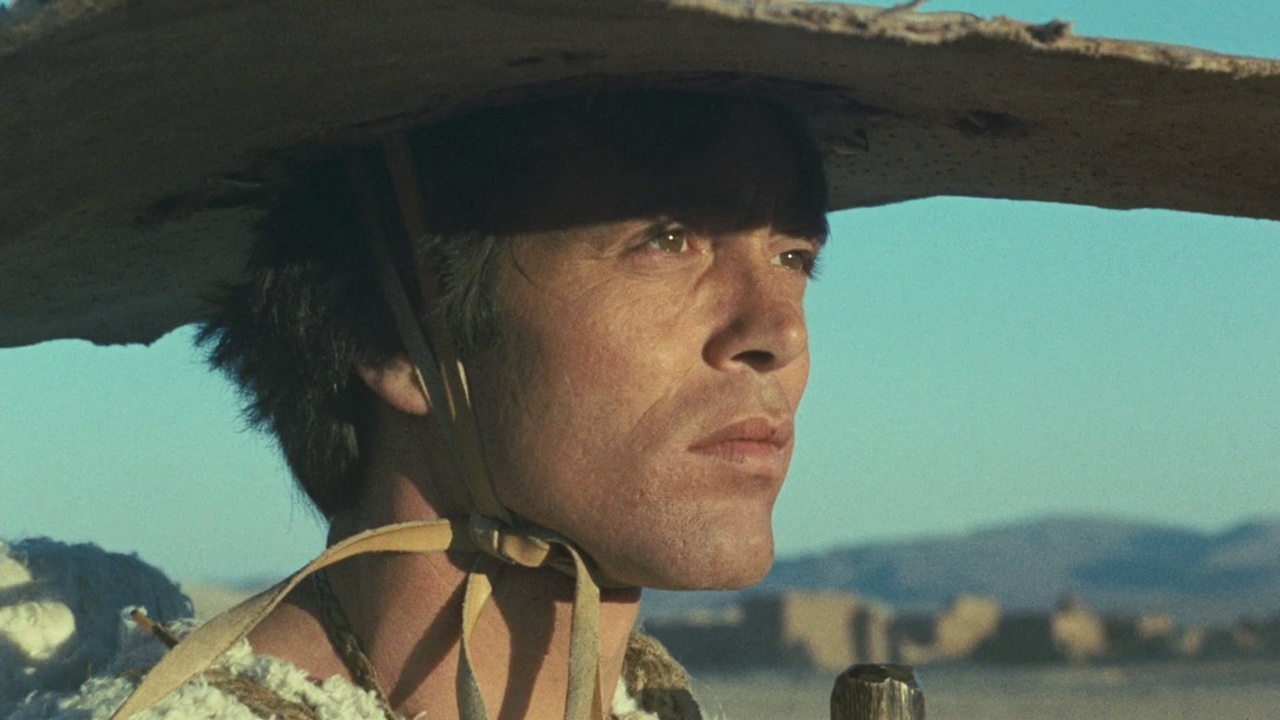I’m not entirely happy with the fortuity of Pasolini’s visit and the act of “finding” music that happens to be matching the creative intent. There are next to no logistical details of his location scouting trip, but I would hazard to assume that his Romanian liaison, or fixer, whoever that might have been, had a hand in sourcing or at least alluding to the music material. One could also imagine that the
Antologia record was a part of an official welcome pack gifted to select visitors to introduce them to Romanian culture - though this is only pure conjecture based on the informal knowledge of the customs and practices in the cultural field of the times.
Edipo Re is intensely psychoanalytical, it begs to be probed and prodded at with all cultural instruments. In a 2011 essay
Oedipus in Transylvania (text in Italian), Dan Octavian Cepraga, Professor of Romanian Literature at the University of Padua, advances a very seductive theory that bridges eras and disciplines. He sees a thin red line connecting the work of Italian intellectuals, among which Ernesto de Martino, widely considered the father of Italian anthropology, plays a key role. De Martino investigates funeral rites and ritual lament in his book
Morte e pianto rituale. Ritual weeping is a sung lamentation involving performative movements and gestures: rocking rhythmically back and forth, tearing one’s clothes, pulling hair, formulaic verses about the dead person, praises of their beauty, virtue. Ritual lament is a practice as well as an institution, in defiance of canonical norms imposed by both Catholic Church in Italy and the Orthodox Church in Romania. There are professional mourners who render their services at funerals. De Martino observes a “technique of weeping”, stereotyped lamentation formulas and patterned body movements, which “generalise” and de-historicise grieving by inducing a “dreamlike state” in the mourner. The Church is uncomfortable with the practice, its missionaries in Africa decrying the “dishonest appearance of artificial grief”.
Two chapters focus on contemporary observations of similar practices in Southern Italy and Romania-where the lamentation is called bocet. De Martino visits Romania for a month in 1955, but draws largely on existing ethnographic studies by Romanian composer and ethnomusicologist
Constantin Brăiloiu on the funeral of Lazăr Boia (Lazzaro Boia). The chapter describes the archaic, mythical, almost pagan ceremonies, perfectly preserved over epochs. Ovidiu Bârlea, the young Romanian researcher assisting de Martino is a student of Brailoiu, who is also responsible for the recording of ritual laments on the Anthology of Romanian Folk Music which Pasolini presumably picks up in Romania.
"Bocet la mama" (Lament for mother),
"Bocet la frate" (Lament for brother) and
"Bocet la fiică" (Lament for daughter) are used sequentially around the meeting with the blind prophet Tyresias. Romanian
bocet, concludes de Martino, belongs less to folklore and more to the primordial source of antiquity, of universal heritage value.
Pasolini, notes Cepraga, is fond of de Martini’s work. At the end of
Morte e pianto rituale, a photographic addendum includes images from the Boia funeral. Among photos of paroxysmal ritual “explosions” captured in Italy, they seem contiguous in their striking similarity. Gait, poise, traits, intention and clothing preternaturally identical. Further down, drawings and reproductions of lamentations and wailers found in scrolls of ancient Egypt, sepulchral art in Sicily and statuettes from Tanagra in Greece. Could this be the key to Pasolini’s creative decision? Is this the nexus that focuses all signs and nodes involved in the production of meaning in
Edipo Re?

